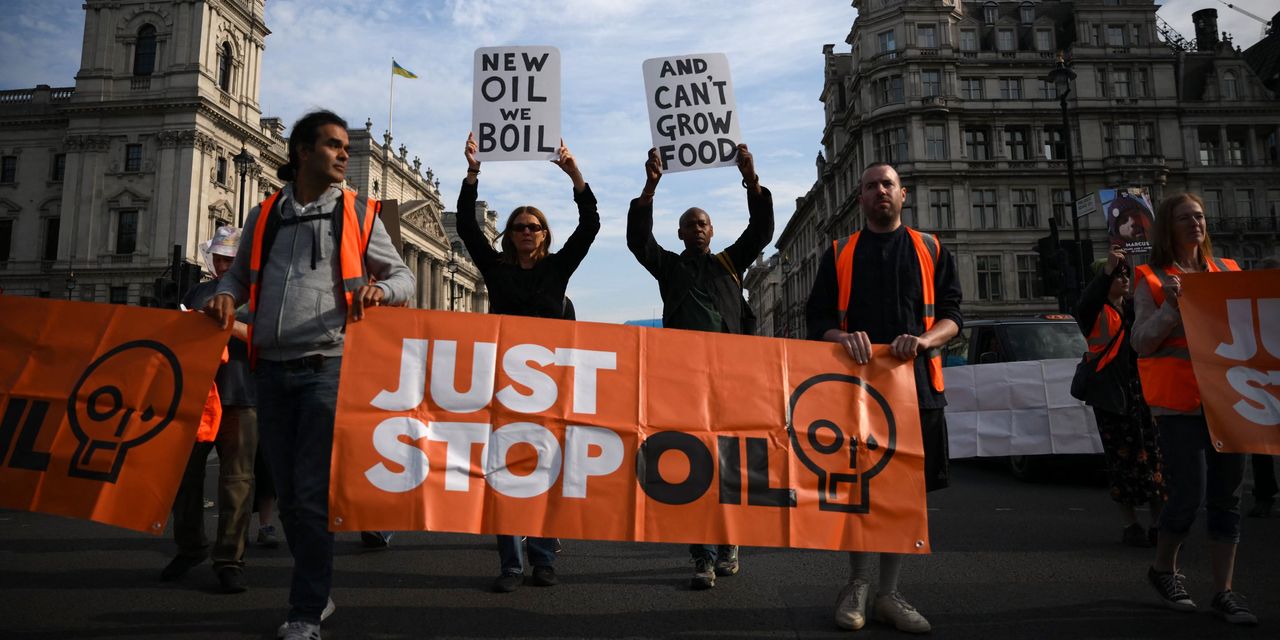Climate change used to be a space in which businesses were excited to get involved. But nowadays, many executives tell me they’re afraid of being branded “greenwashers.” It’s a risk to company reputation they might not feel is worth the trouble.
Activists are the pulse of the climate-change movement. But their increasingly aggressive and public criticisms of climate-conscious businesses are having the opposite effect to the one intended, which is making the collective fight against global warming more difficult.
Read: Tens of thousands of climate activists around the world to demand end to fossil fuels as weather events grow
This combative dynamic serves no one — not activists, not businesses and certainly not the planet.
Fortunately, there’s a better way.
As the founder and managing partner of a climate-focused growth-equity fund, I’ve seen the most progress when companies and activists put blame on the back burner and devote their energy to forming trusting relationships with one another. Meaningful progress on global warming will be built upon these personal partnerships.
I know that might sound unlikely, given the concerning amount of enmity that’s accumulated between these two worlds. But it’s not.
Consider the U.S.-based company BlocPower, which modernizes buildings with clean-energy infrastructure. It recruits customers from communities most affected by climate change — the people, often from communities of color, whose voices activists amplify. The strong bonds between company leadership and the people they serve has fueled BlocPower’s success. It has raised $250 million in capital and was named one of Time’s 100 most influential companies of 2022. (Note: My fund has invested in BlocPower.)
Sadly, partnerships like these are not the norm.
Business leaders consider themselves pragmatists, ready to apply their technical know-how to innovative solutions. Some have discreetly shared with me that aggressive rhetoric and vilification from environmental-justice groups impedes them from reaching their goals. They say that it can create a culture of fear.
On the activist side, frustration and urgency dominate. This is understandable, given how long they’ve been working to hold businesses and individuals accountable for their roles in creating the climate catastrophe. Without the heroic efforts of climate activists over the decades, we’d never have come this far in confronting the problem.
Many activists feel that since businesses created this problem, they can’t be trusted to help solve it — and even if they could, their methodical approach is too slow. Among activists, anger has sometimes risen to such a pitch that groups like Just Stop Oil have taken drastic actions such as tying themselves to soccer goalposts and throwing soup onto famous paintings.
Businesses and activists who want to mitigate global warming approach that goal from vastly different perspectives. But the problem isn’t that they have different views; it’s that they’re missing opportunities to work together.
Of course, it’s easy to suggest that business and activist communities sideline their differences for the common good. It’s much harder to see a world where that’s a reality. It will have to start with a return to basics.
In the climate world, we desperately need human connections that transcend each side’s overarching biases about the other.
When we create silos, no one wins. Executives would benefit from a deeper understanding of what activists are doing on the ground. The simplest way to do that is with proximity — getting involved in community-based efforts to mitigate climate change by joining groups, attending events and activities and lending their voices from a private-sector perspective.
Related: Climate change: Newsom will sign California’s first-in-nation law requiring big companies to report all emissions
Companies should also strive to incorporate activists as advisers on climate-related projects. But this shouldn’t be just asking for input. Activists should be appointed as board advisers so their perspectives can be meaningfully heard and implemented.
For activists, it’s important to emphasize that no one is expecting them to not be angry. They should be — we all are. But they need to consider more constructive ways of channeling our collective anger. Calling out companies doesn’t reduce fossil-fuel-generated
CL00,
carbon dioxide levels; advances and investments in clean energy
ICLN
do. Even if they maintain a healthy skepticism of business and finance, activists must realize that the private sector offers the most direct path to climate-change mitigation.
If environmental activists are approached by businesses to work together, they should seriously consider it. Getting inside the belly of the beast isn’t selling out; it’s applying energy to a cause to make a major impact.
If activists and businesses can come together, they’ll produce a joint energy greater than the sum of its parts. Environmental groups need efficiency and cash from companies, and companies need the enthusiasm and moral compass of activists.
Read: UAE oil exec and leader of COP28 climate summit tells U.N., energy industry to ‘get after gigatons’ of emissions
With more stakeholders working together on major sustainability solutions, a more diverse set of voices will naturally be involved in decision making. This will ensure their actions are closely tied to community needs.
Climate-aligned businesses and activists can draw on their substantial networks to direct widespread attention to certain pressing issues, such as adaptation for human migration prompted by climate change. This will create a strong center of gravity to attract private and public attention to these causes.
No matter where they’re coming from, businesses and activist groups in the climate space are made up of individuals who care deeply about preventing a climate catastrophe. To succeed, they’ll need to set aside their identification with their own clan and focus on working together to protect our future.
Tenzin Seldon is founder and managing partner of Pulse Fund, a growth-equity climate fund.
Read the full article here













Leave a Reply